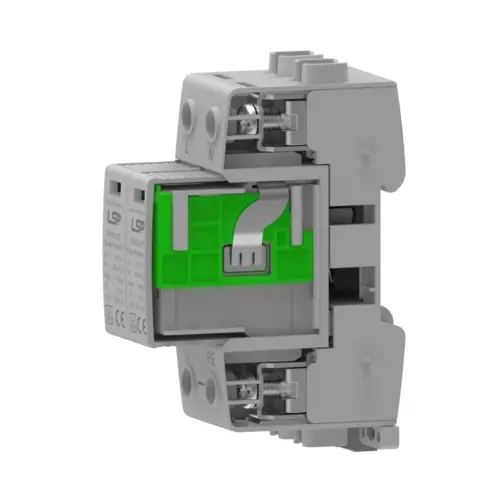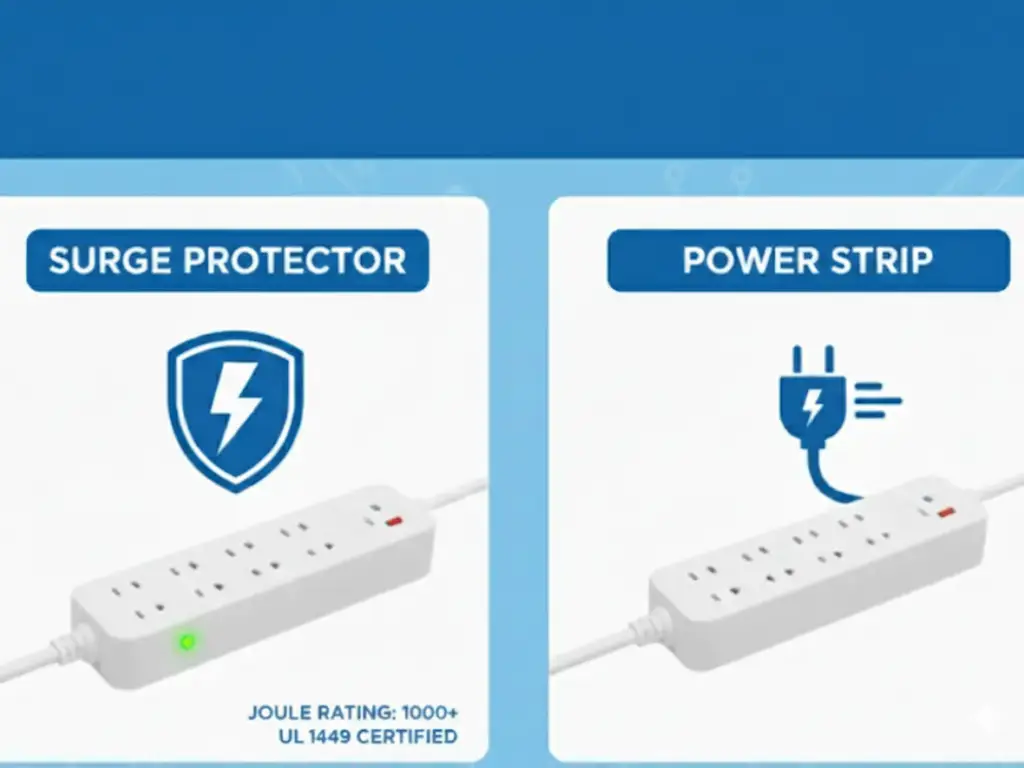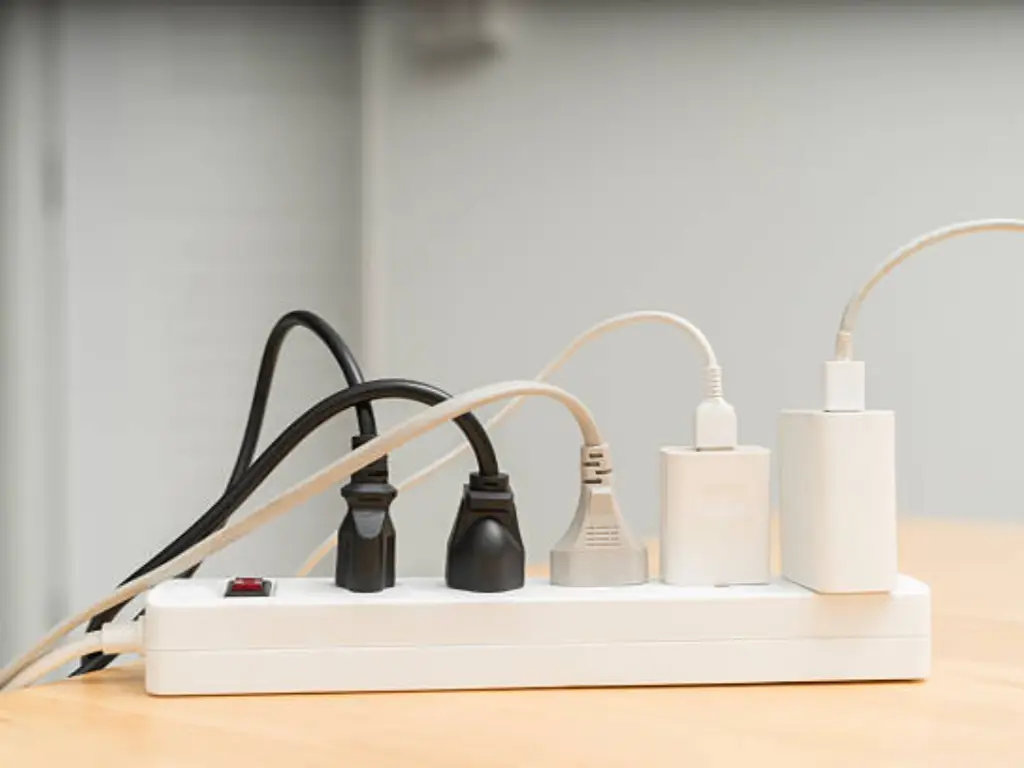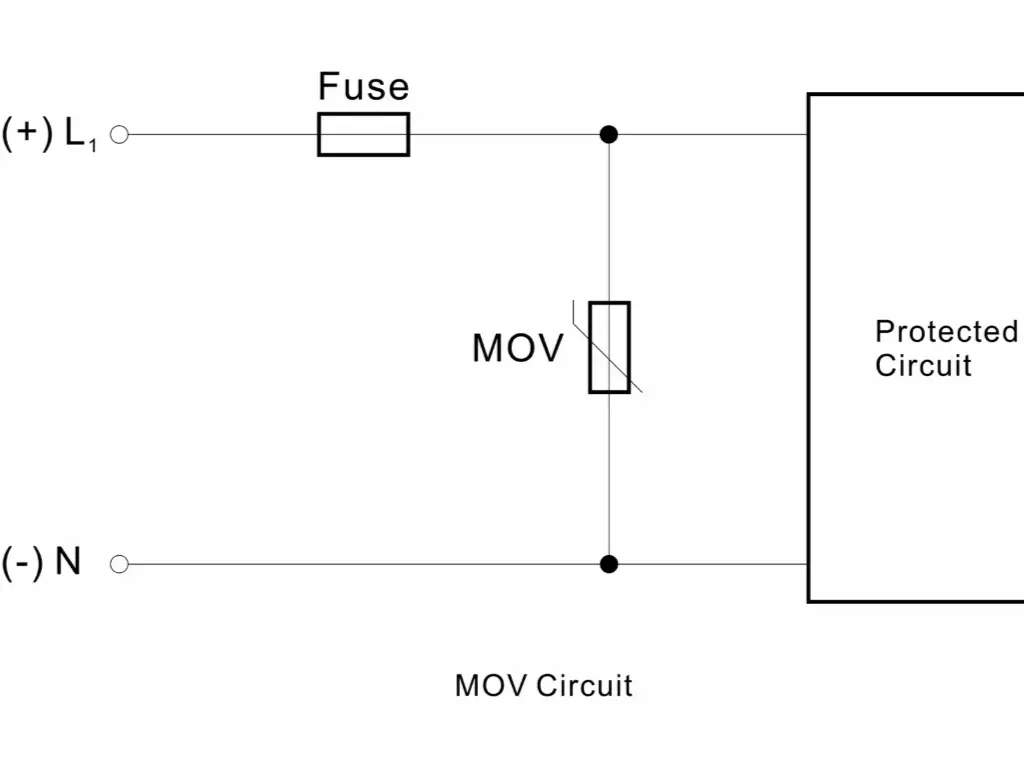Introduction: Clearing Confusion and Protecting Your Electronics
There are few terms in the electrical trade that are more commonly confused and misused than the terms Consumer Unit and Distribution Board. The vagueness is not surprising. Step on a site and you will hear both used to refer to the central DB box or breaker panel out of which the electrical power for a building’s entire electrical system flows. This article will act as a clarifier par excellence, and it will draw a clear practical line between these two important elements in all electrical installations. We are going to unravel the misunderstanding and determine what makes them different.
But to resolve a dispute about terminology is merely the first step in our work here. There is a much more urgent question that needs to be asked, and it is one that goes beyond the nomenclature and cuts to the core of electrical safety in the modern world: are the sensitive, costly electronics under your care really safe? Regardless of whether your installation has a Consumer Unit or a Distribution Board, it is simply a gateway. What is dangerous is not its name, but the unstable, invisible forces that flow through it. We are talking about electrical surges, also known as power surges, which can lead to catastrophic failures and even electrical fires. Thus, as we explain the what, we will shift to the much more important why—why a Surge Protection Device (SPD) offering surge protection has become an essential part of any contemporary electrical installation.
The Core Difference: It’s All About Location and Application
In essence, the difference between a Consumer Unit and a Distribution Board is not one of basic purpose, but of particular use, regulatory environment and geographical custom. The two are intended to do the same fundamental job: to accept an incoming electrical power feed from the main supply and safely divide the electrical power between a series of secondary circuits. These subsidiary circuits or individual circuits are each guarded by a protective device like a circuit breaker or fuse to prevent electrical faults such as short circuits. The difference comes in when we question where and to whom they are doing this work.
Distribution Board: The Universal Term
Consider Distribution Board as the umbrella term, which is internationally accepted. It is the generic, technical name of any panel or enclosure—often called an electrical distribution board or one of various distribution panels—that contains circuit breakers, fuses, and residual current devices (RCDs) to distribute power to different sections of a building. Distribution boards, in their many sizes and complexities, are at the centre of industrial settings, commercial office blocks, hospitals, and data centres around the world, especially in larger installations and larger buildings. They are designed by the size and unique requirements of their surroundings, which are frequently large, complicated, and needthree-phase power distribution from a phase distribution board to handle a significant electrical load and support heavy equipment, large lighting systems, HVAC systems, and even factory ovens. From standard models to specific variants like Type B distribution boards, it is the workhorse of the electrical world, designed for power, versatility, and to meet sustained load demands.
Consumer Unit: The UK Domestic Specialist
*This video introduces some basic knowledge about the Consumer Unit.
The Consumer Unit, however, is a far more precise animal. It is a term that is mostly used in the United Kingdom and is legally and technically defined by its use in domestic properties. It is basically a specialised type of distribution board adapted to the home, replacing older fuse boxes or fuse boards.
The most important difference is regulation. Any type of consumer unit fitted in the UK must meet the demanding safety standards of BS 7671, Requirements for Electrical Installations. These regulations govern all aspects, from the enclosure to the necessary circuit protection devices. For example, modern consumer units must provide comprehensive RCD protection to protect against a dangerous electric shock. This is often achieved by a residual current device, also known as a residual current circuit breaker, which monitors for earth leakage. There are different methods and configurations, such as a dual RCD consumer unit providing dual RCD protection across two circuit banks, an RC incomer consumer unit, or a main switch consumer unit where a single main switch controls the entire board. Thus the most precise way to describe the relationship is as follows: every Consumer Unit is a Distribution Board, but not every Distribution Board is a Consumer Unit. One is a regulated, specific subtype of the other, characterized by its domestic role.
A Quick Comparison Table: Consumer Unit vs. Distribution Board
| Feature | Consumer Unit | Distribution Board |
| Primary Region | United Kingdom | International / Global |
| Typical Application | Domestic properties (homes, flats) | Commercial, industrial settings, large residential complexes |
| Governing Standard | Must strictly adhere to BS 7671 | Varies by country and application (e.g., IEC 61439) |
| Common Power Phase | Typically Single Phase | Often Three Phase |
| Design Complexity | Relatively simple, standardised layout | Can be highly complex and custom-configured |
| Primary Purpose | Safety of inhabitants and standard home appliances | Power distribution to heavy loads, machinery, sub-systems |
Why Surge Protection is No Longer an Optional Extra

We have determined the what, now we have to address the why. Within the buildings guarded by these units, there has been a silent revolution in the past 20 years. The durable, simple machines of the past have been replaced with a delicate and complicated digital ecosystem. Your television, your computer, your smart speaker, the charging station of your electric vehicle, and even your refrigerator and washing machine are no longer mere mechanical devices, but complex technological objects. They are based on microprocessors—the delicate brains of the machine—which run on low-voltage, precise instructions.
All this digital infrastructure is extremely susceptible to destruction by electricalpower surges. A surge, or transient overvoltage, is a sudden, temporary increase in the voltage of the electricity supply. The most notorious offender is a lightning strike, a key one of many environmental factors—which may cause a devastating surge that can destroy almost everything that is connected to a system. But the much more frequent and insidious dangers are the hundreds of smaller surges that come every day. These are the common, smaller overvoltages that are caused by the grid itself—by large motors in nearby factories starting up, or by power company switching operations, or even heavy appliances cycling on and off within the building.
All these smaller surges damage the sensitive circuitry in your electronics causing premature failure, corruption of data, or intermittent faults. It is an additive process of damage. What was once a luxury add-on to regions of high lightning risk has become a basic necessity to the maintenance of the functionality and life of modern electronic life.
How Does a Surge Protection Device (SPD) Actually Work?

*This GIF shows how SPDs work.
The role of an SPD may appear to be a mystery to the uninitiated, but the principle of its operation is ingeniously simple and efficient. An appropriate analogy is the pressure safety valve on a boiler, where the SPD watches the mains power but does not affect the electrical supply.
In normal circumstances, where the incoming mains voltage is stable and within its anticipated range (e.g. 230V in the UK), the SPD is inactive. It is a passive device that measures the voltage thousands of times a second and is invisible to your appliances and does not interfere with the electrical supply.
But as soon as a surge is sensed, when a voltage spike rises above a predetermined safe level, the SPDgoes into action in nanoseconds. Its main part, usually a Metal Oxide Varistor (MOV), switches in an instant between a high-resistance insulator and a low-resistance conductor. This provides a safe path to redirect excess voltage away from the live wire and current to the earth connection, preventing dangerous earth leakage. After the surge is over, the SPD automatically resets itself, back to its monitoring state, awaiting the next event. Readers seeking practical context can explore a full distribution board diagram showing SPD placement and operation.
Choosing the Right SPD: A Guide to Total Protection
Selecting an SPD is not merely about ticking a box; it’s about choosing a critical safety component with the right safety features for a customer’s entire digital world. A quality SPD is defined by several key metrics: its response time (the faster, the better), its maximum discharge current (Imax), which indicates its robustness, and its voltage protection level (Up), which shows the residual voltage that gets through to the equipment. Crucially, however, a primary consideration must be compliance with the latest standards, ensuring the device is both safe and legally fit for purpose.
Why LSP’s SPDs Offer Superior, Compliant Protection
- Fire protection design, 5-year warranty
- Top tier raw materials: MOV from LKD®, GDT from Vactech®, etc.
- 300,000 pcs/year
At LSP, we understand the importance of compliance when it comes to Surge Protective Devices (SPDs). To ensure your installation is free from any compliance risks, all our SPD products strictly adhere to the latest IEC standards and have passed international certifications such as TUV, CB, and CE. By choosing LSP, you can be confident that your installation will meet global compliance requirements, eliminating concerns about legal and safety issues. Our products offer not only efficient surge protection but also ensure that your equipment installation is fully compliant with industry regulations.
With our leading technology, LSP’s SPD products excel in both response speed and durability. We use high-quality LKD MOV materials and Vactech GDTs, which effectively withstand various surge impacts, providing long-lasting protection. Our SPDs also undergo 48-hour salt fog testing, ensuring stable performance even in harsh environments, with a lifespan of over five years. These core technological advantages ensure our products offer reliable protection in the ever-changing surge environment.
By choosing LSP, your customers will receive genuine peace of mind, avoiding expensive equipment repairs or replacements caused by surges. One installation, long-lasting benefits. Our SPDs significantly reduce the failure rates and maintenance costs of electrical equipment, improve customer efficiency, and extend the lifespan of their devices. Additionally, we provide electricians with clear installation guides and comprehensive technical support, simplifying the installation process and ensuring each step is smooth and efficient. LSP’s thoughtful and practical product design guarantees worry-free protection, helping customers receive long-term value in power surge protection.
Is SPD Legally Required in Your Installation?

The requirements of surge protection have been clarified considerably by the BS 7671:2018+A2:2022 regulations. Although not required in each and every installation, particularly for older properties, the rules now establish a very strong presumption in favour of their inclusion for all new installations.
The regulations provide that protection against transient overvoltages should be provided where the effect of a surge may cause:
- Significant damage to, or loss of, human life. (e.g., hospitals, medical facilities)
- Safety service failure. (e.g., smoke detectors, fire alarm systems)
- Major monetary or information loss. (e.g., business ventures, data centres)
In the case of a typical domestic dwelling, these conditions are unlikely to be fulfilled in a manner that makes SPDs legally required. But the regulations go on to say that in all other instances, protection will be given unless the owner of the installation specifically waives it and takes the risk of not having it. With the modern electronic equipment in the average home being of high value and sensitivity, it is now best practice to install an SPD and highly recommended by industry bodies. A professional standard of care is to warn a client of the risks and provide a compliant solution that enhances electrical safety.
Frequently Asked Questions (FAQ)
Q: Can I add an SPD to my old fuse box?
A: Although technically feasible to fit an external SPD module next to an older fuse box (or fuse boards), it is highly advisable to replace the whole unit with a modern, 18th Edition compliant consumer unit. Not only will a new unit house an integral SPD in a clean and safe manner, but it will also offer vastly superior circuit protection with a modern circuit breaker (or current breaker) and mandatory RCD/RCBO protection for all electrical circuits.
Q: How often should an SPD be replaced?
A: Quality SPDs are made to last long. The majority of modern SPDs have a visual status indicator. This small window will normally be green when the status is OK and turn red when the internal protective components have been compromised or sacrificed following the diversion of a major surge. The device must be inspected during regular electrical checks and in case the indicator indicates a fault, it should be replaced at once. They can live many years without a significant event.
Q: Will SPD protect my entire house?
A: The most common type of SPD installed in a consumer unit is a Type 2 SPD, which protects the whole installation. It protects all the fixed wiring and every device connected to any socket outlets and the various circuit banks within the electrical panels by diverting the surge at the point of entry to the property. To provide full protection in high-risk locations, a combination of a Type 1 SPD at the source of the supply and Type 3 SPDs close to sensitive equipment can be considered, although in most domestic premises a Type 2 device in the consumer unit will offer excellent and adequate whole-house protection.
Conclusion: A Smart Investment in Safety and Peace of Mind
The distinction is clear: a Consumer Unit is simply the UK’s domestic-specific version of the universal Distribution Board. But this knowledge, while useful, is secondary to a more profound truth of our time. The value within a modern property is no longer just in its bricks and mortar; it is in the sophisticated, expensive, and vulnerable electronics that make a house a home or an office productive.
Leaving this ecosystem unprotected against the certainty of electrical surges is no longer a viable option. The installation of circuit protection devices like SPD is not an expense; it is a smart, forward-thinking investment in the longevity of equipment, the continuity of lifestyle, and the security of a modern electrical system. It is a declaration that you value not just the distribution of power, but its quality and safety.
Protect your clients’ investments from the damage you can’t see. Explore our full range of compliant LSP Surge Protection Devices today and find the perfect protection solution for your next project.



